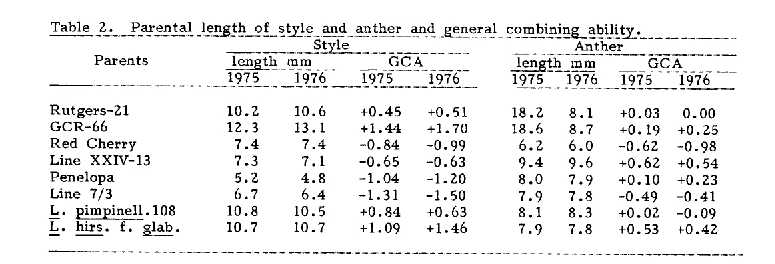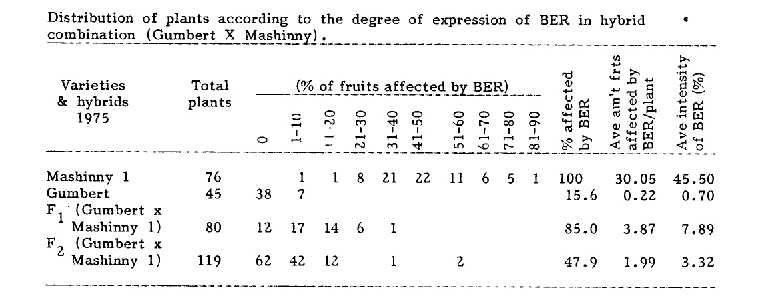Avdeyev, Y. I., and T. V. Boeva Resistance
The tomato blossom-end rot (BER) reduces
of tomato to blossom-end rot.
early marketable yield of the tomato by 15-
40 percent. In natural field conditions the
disease is not constant. A plot with an area of 400 square meters where annually 100 percent of
plants of susceptible varieties are affected by BER has been found. The conditions of different
years modified the intensity of BER, greater damage occurring in hot dry years. In F1 hybrids from
crossing susceptible variety Mashinny 1 with the resistant variety Gumbert, the resistance is not
completely dominant (Table). In F2 the ratio of plants susceptible to BER to the others is from 1:40
to 1:60. It is supposed that the resistance to BER is caused by 2 or 4 independent incompletely-
dominant genes with additive effect. The genes causing the given type of resistance may be
designated by the following symbol "Ber (Ber-2,...)".
Cappadocia, M., and J. A. Meyer In vitro
culture of flower buds and anthers from the
hybrid L. esculentum x L. peruvianum.
the self-incompatible interspecific diploid hybrid between L. esculentum cv. San Marzano and L.
peruvianum (for a description of the hybrid, see de Nettancourt et al., 1974).
With the aim of recovering haploid plants of
tomatoes which combine different dosages of
esculentum
and
peruvianum
chromosomes,
attempts have been made to culture on
artificial media flower buds and anthers of
No navigation control above? Click here!


